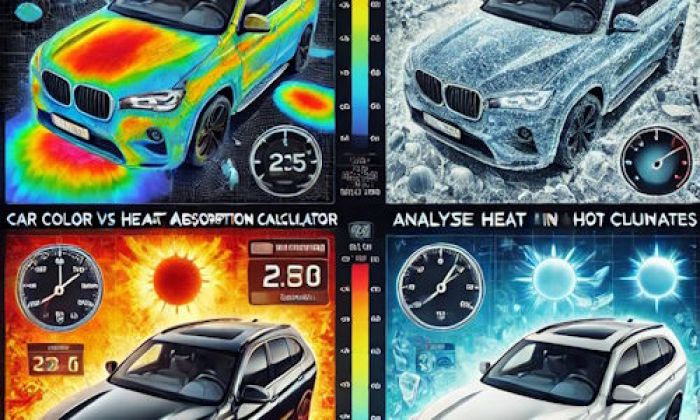There are plenty of reasons why the demand for Ford vehicles is high despite the tough competition posed by the American automaker's rivals in the market. One of them is the affordable pricing of its products matched with pretty decent performance and safety features that makes its cars, trucks, and SUVs very reliable whether they are used for transporting people or cargo.
Charging system message highlights
- Common reasons:alternator problems, dying battery, wiring issues, voltage regulator faulty
- How to fix:check the battery, check the alternator, confirm the wiring is OK
- Possible consequences:car may not start eventually
- Priority level:High
- Can you drive?Yes
- DIY repair:Possible
- Repair price range:$150-$800

Most Common Causes of the "Charging System: Service Now" Warning in Ford Vehicles
According to reports, mechanics, and information shared by Ford owners who have successfully found a remedy to the issue, the following conditions may most likely be causing the "Charging System: Service Now" in Ford vehicles:
1. Major Battery Drain
The battery is a critical component of a vehicle because it provides power to the starter motor that kickstarts the engine. It also powers the vehicle's electrical accessories, such as the headlights, radio, and windshield wipers. If the battery is not working properly, these accessories may not work correctly or may not work at all.
The signs of a major battery drain causing power shortage in Ford vehicles include dim headlights, slow cranking when starting the engine, and electrical accessories that do not work or only work intermittently. If the battery is completely drained, the engine will not start at all.
A bad battery can trigger the "Charging System: Service Now" warning in the dashboard of the vehicle because it cannot provide enough power to the starter motor and electrical accessories.
To check the quality of the battery, you will need a multimeter. With the multimeter set to the "DC Voltage" setting, touch the red lead to the positive terminal of the battery and the black lead to the negative terminal.
A fully charged battery should reflect a reading of at least 12.6 volts. If it shows 12.4 volts or lower, it only needs to be recharged. To test for a bad cell in the battery, take a voltage reading between each pair of adjacent terminals. There should be a 0.2-volt difference between each reading. If there is no difference or if one of the readings is zero, this indicates a bad cell and the battery needs to be replaced.
While you're at it, check the condition of the battery sensor, too. Open its encasing to check for possible dirt contamination or burn marks. If it's just dirty, you may be able to clean it up with a soft cloth and brush while the vehicle's engine is off. If it's showing a significant amount of damage already, then you will have to change it with a new part.
2. Bad Alternator
The alternator recharges the battery and supplies electricity to the system of the vehicle while the engine is up and running. The battery will gradually lose its charge if the alternator malfunctions, which will ultimately cause the car to stall.
Some symptoms can indicate a failing alternator, including dim headlights, dashboard lights that flicker or are dim, and strange noises coming from under the hood. If the "Charging System: Service Now" warning light comes on in the dashboard, it indicates that there is a problem with the alternator, too.
To diagnose a failing alternator, check all of the connections to make sure they are secure and clean first. Next, test the battery to see if it is still capable of holding a charge. Finally, use a multimeter to test the alternator itself.
To do this, the multimeter should be set to DCV over 15 volts while having its black cable connected to the negative terminal and the red one on the positive side. If you conducted the test while the vehicle's engine is off, it should show a reading not lower than 12.6 volts.
Meanwhile, the values should keep a steady stream between 14.2 and 14.7 while the engine is on, and not lower than 13 volts when the lights, fan, radio, and other electronic equipment are operating.
If the readings are not within the specified figures, then your alternator is indeed failing, and it will have to be replaced by a mechanic.
3. Defective Fuse
Blown fuses can bring about a host of electrical problems in your vehicle, and that may include the charging system issue. When anything pulls too much power from the circuit, it frequently blows fuses. The most common causes of this include utilizing excessive numbers of plug-in equipment or lights simultaneously.
Blown fuses can cause all sorts of electrical and even mechanical problems for your auto. These can manifest via dimming or flickering lights, malfunctioning audio system, hard starts, and performance issues.
To diagnose blown fuses, check each of them for signs of damage such as darkened spots, chipping, melting, or cracking. In the absence of visual cues, then check each fuse for continuity with a multimeter. The fuse is probably blown and has to be changed if there is no continuity.
4. Voltage Regulator Malfunction
The voltage regulator in Ford vehicles is responsible for ensuring that the electric current supplied to the electrical system is within the correct voltage. If the voltage regulator malfunctions, it can cause the electric current to become very high or very low, which can damage the electrical components of the auto.
Several signs can indicate that the voltage regulator is not working correctly. These include dimming headlights, flickering interior lights, and problems with the audio system. If you notice any of these symptoms, it is important to have the voltage regulator checked as soon as possible. A bad voltage regulator can also trigger the "Charging System: Service Now" warning in the dashboard of the vehicle.
To diagnose the cause of the problem, start by ensuring that the battery and alternator are all working well. With no other parts possibly triggering the charging system issue, proceed by assessing the quality of the voltage regulator. This component is normally located near the starter relay of Ford vehicles.
Begin looking for signs of burns or any kind of damage to that area. If there are any, have the regulator replaced immediately by a qualified technician or mechanic.
If the part looks okay yet you have a hunch that it is still the culprit, you may confirm your suspicion through the use of a multimeter to measure the electric current flowing through it. If the current is too high or too low, it indicates that the voltage regulator is not working correctly.
Basically, the reading on the multimeter should remain steady between 13.5 volts and 14.5 volts. If it is not, then this indicates that the voltage regulator is not working correctly and needs to be changed.
5. Wiring Issues
The charging system problem may be due to wiring and connector issues also. You have to pay special attention to the connections of the alternator going to the PCM and the battery cables because these are the areas where this type of trouble tends to brew in Ford vehicles.
Any green or white powdery substance on each line is an indication of corrosion in the wires. If you see these signs, detach the contaminated wiring from the power source and clean it with a wire brush or a corrosion cleaning solution.
To inspect for loose connections, you can simply conduct a visual check-up. Gaps between the wire and connector mean it needs to be tightened or replaced if the connectors are no longer fitting properly. However, if signs of fraying or shorting are visible on them, have the problematic part replaced.
If you want to test if your wiring is still effective as a medium for providing power to the component where it's supposed to go, use a voltmeter to check the resistance.
Start by setting the voltmeter to resistance mode. Attach one probe to each end of the wire where the resistance of the wire will be displayed on the voltmeter.
High resistance indicates a bad connection, while low resistance means the connection is good. If the voltmeter doesn't register a reading at all, then there is an open circuit and no current can flow through the wire.
More often than not, it is more economical and less time-consuming to have the defective wiring harness replaced by your mechanic rather than having to clean the individual wires and connectors, as well as buying a separate cleaning solution or even a voltmeter if you don't have one yet.
6. PCM Problems
The powertrain control module (PCM) in Ford is responsible for managing the engine and transmission. It monitors a variety of sensors to ensure that the engine is running properly and it also makes the necessary adjustments.
If the PCM starts acting up, it may falsely bring out random stuff in your dashboard including the "Charging System: Service Now" warning. It may be coupled with other signs that similarly point to a malfunctioning PCM such as stalling, misfiring, transmission issues, Check Engine light, and reduced fuel economy.
If you notice any of these issues, it is important to have the PCM diagnosed by a qualified technician or mechanic as soon as possible. Normally, software-related problems within this part can be fixed via reflashing, which is simply reprogramming or updating its operating system to the latest optimal configuration offered by Ford.
However, if the hardware itself has already been compromised and can no longer be repaired, it will have to be replaced by your auto technician or mechanic.
Conclusion
As seen here, there are many elements that may activate the "Charging System: Service Now" warning in Ford vehicles. They also tend to trigger the same kinds of symptoms, which make them especially hard to diagnose.
Therefore, if you are having this type of problem, better bring your auto to a car technician or mechanic immediately for a more thorough check-up and so that only the necessary repairs will be made.
About the authors
The CarAraC research team is composed of seasoned auto mechanics and automotive industry professionals, including individuals with advanced degrees and certifications in their field. Our team members boast prestigious credentials, reflecting their extensive knowledge and skills. These qualifications include: IMI: Institute of the Motor Industry, ASE-Certified Master Automobile Technicians; Coventry University, Graduate of MA in Automotive Journalism; Politecnico di Torino, Italy, MS Automotive Engineering; Ss. Cyril and Methodius University in Skopje, Mechanical University in Skopje; TOC Automotive College; DHA Suffa University, Department of Mechanical Engineering






Add comment